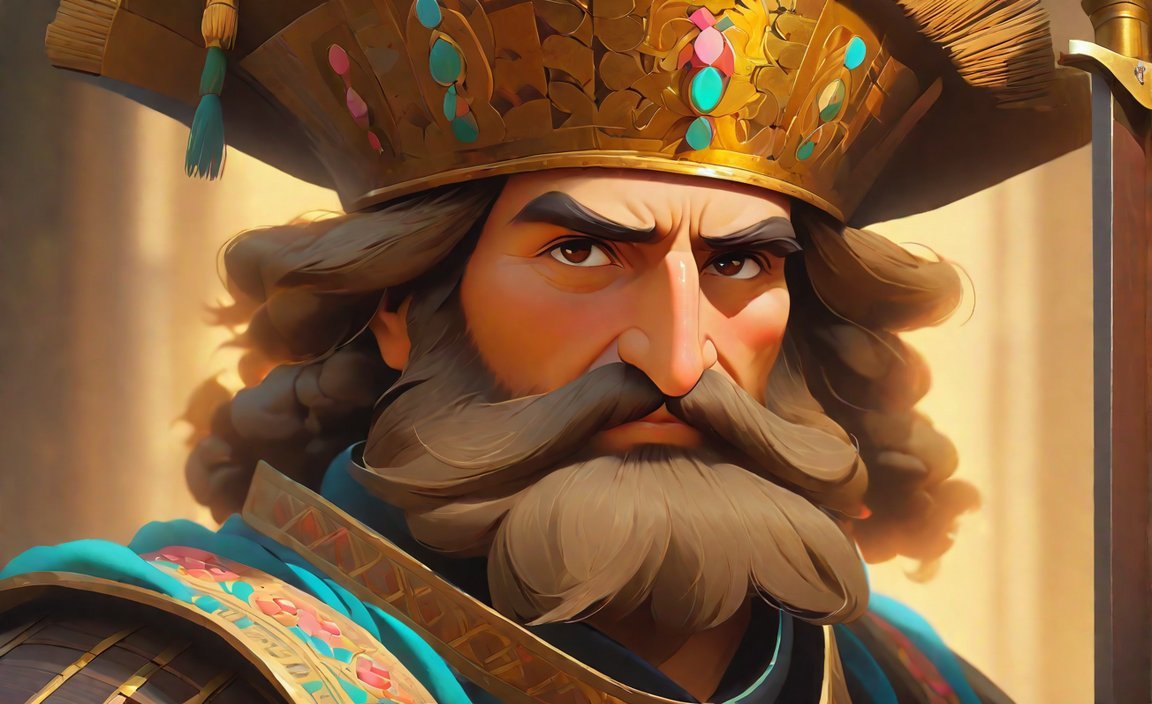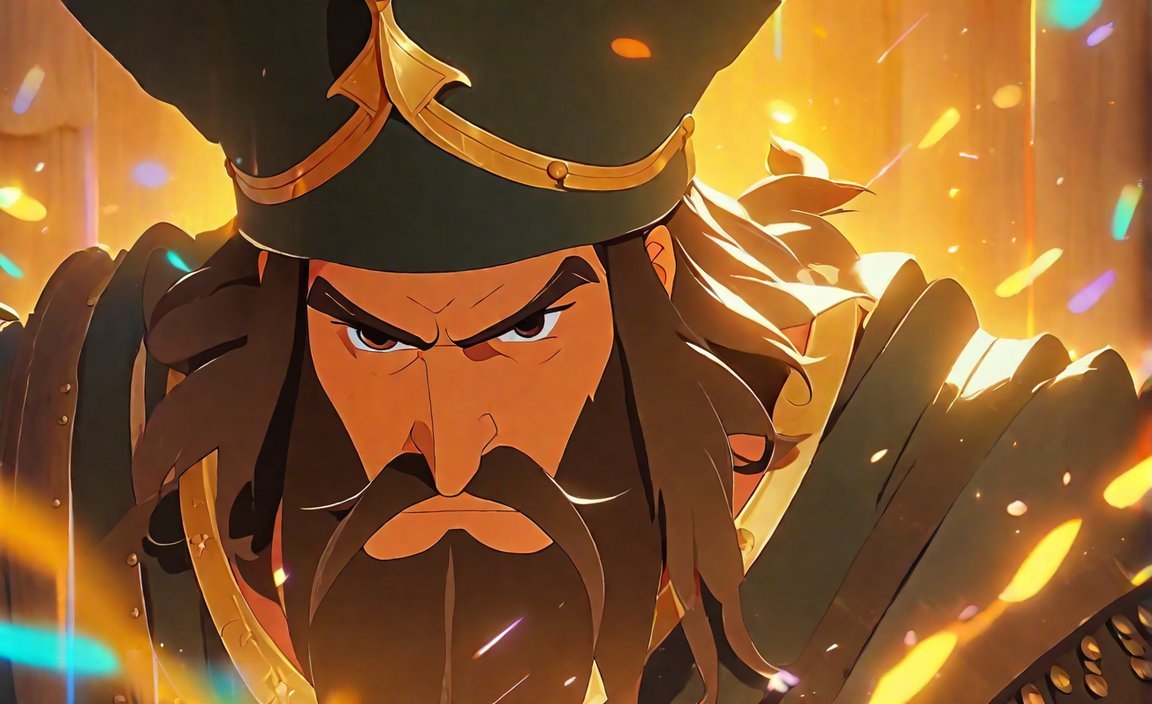Delve into the adventurous world of the esteemed Spanish conquistador, Francisco Pizarro, as we explore a treasure trove of lesser-known fun facts about his life and exploits. From his daring conquest of the Inca Empire to his tumultuous journey through the uncharted territories of South America, join us on a captivating journey as we unravel the captivating anecdotes and engaging details that make Pizarro’s story one that truly captures the imagination. Get ready to be enthralled by an exploration of history like never before.
Key Takeaways:
- Francisco Pizarro was the second cousin once removed of Hernan Cortez, the conquistador who conquered the Aztecs in Mexico.
- The exact birthdate of Pizarro is uncertain, but it is believed to be between 1471 and 1476.
- Pizarro set sail with Alonzo de Ojeda from Spain to the New World in 1509.
- He became the mayor of Panama City and later conquered the Inca Empire in Peru.
- Pizarro joined Vasco Núñez de Balboa’s expedition that discovered the Pacific Ocean in 1513.
- He was killed in 1541 by his own men during a dispute over power and wealth.
Fun Facts About Francisco Pizarro

Francisco Pizarro, the renowned Spanish conquistador, was a fascinating figure who played a significant role in shaping the history of Peru and South America. Let’s dive into some intriguing and lesser-known fun facts about this remarkable explorer.
1. A Family Connection to Conquest
Did you know that Francisco Pizarro was the second cousin once removed of Hernan Cortez? Cortez, another famous conquistador, is best known for his conquest of the Aztec Empire in Mexico. It seems that a thirst for exploration and conquest ran in the family!
2. Uncertain Birthdate
While we know that Francisco Pizarro was born between 1471 and 1476, the exact date remains uncertain. Even with this uncertainty, Pizarro’s impact on history is undeniable.
3. Voyage to the New World
In 1509, Pizarro set sail for the New World, embarking on a journey with Alonzo de Ojeda. This voyage marked the beginning of his adventurous endeavors and the path that would eventually lead him to Peru.
4. From Mayor to Conqueror
After arriving in the New World, Pizarro’s ambitions propelled him to the position of mayor in Panama City. However, his thirst for conquest was far from satisfied. Pizarro went on to lead an expedition that resulted in the conquest of the Inca Empire in Peru. This remarkable achievement secured his place in history.
5. Discovery of the Pacific Ocean
Not content with his previous exploits, Pizarro joined Vasco Núñez de Balboa’s expedition in 1513. It was during this endeavor that the Pacific Ocean was discovered by European explorers. Pizarro played a significant role in this historic event, adding yet another feat to his long list of accomplishments.
6. A Tragic End
Sadly, Francisco Pizarro’s life came to a tragic end. In 1541, he was killed by his own men in a power dispute over wealth. Even in his demise, Pizarro’s legacy continued to intrigue and captivate the imagination.
For those eager to delve deeper into the life and exploits of Francisco Pizarro, there are ample resources available. Websites like Ducksters – Explorers for Kids: Francisco Pizarro and Tons of Facts: 30 Bizarre And Interesting Facts About Francisco Pizarro provide valuable information and anecdotes about this esteemed Spanish conquistador.
With these fun and lesser-known facts, we journeyed into the captivating world of Francisco Pizarro. From his family connections to conquests, his life is a testament to the brave spirit of exploration and the indelible mark left by conquistadors like him.
Here are some fascinating facts that you might not know about blueberries. Did you know that blueberries are one of the few fruits native to North America? Explore more fun blueberry facts here.
Grasshoppers are not just ordinary insects; they have some intriguing qualities! From their exceptional jumping abilities to their ability to produce sound using their wings, there’s no shortage of interesting facts about grasshoppers. Get to know more fun facts about grasshoppers here.
When it comes to welding, there’s more than meets the eye! Did you know that welding dates back thousands of years, with evidence of welded gold artifacts from the Bronze Age? Discover more captivating fun facts about welding here.
Curious about the world of chartered accountants? These financial professionals have some fascinating facts you might find surprising. From their extensive knowledge of tax laws to their ability to analyze complex financial data, there’s much more to learn about chartered accountants. Find out more interesting facts about chartered accountants here.
Unveiling the Intriguing and Lesser-Known Fun Facts about Francisco Pizarro
He captured and eventually executed the Inca emperor Atahualpa.
Francisco Pizarro, renowned for his exploration and conquest, left an indelible mark on history. Let’s delve into his captivating story and uncover lesser-known aspects that will surely captivate your imagination.
The Capture of Atahualpa: A Turning Point in History
One of the most pivotal moments in Francisco Pizarro’s journey was his capture of the Inca emperor Atahualpa. This momentous event forever altered the course of history and secured the Inca lands for the conquistadores.
Atahualpa, the 13th emperor of the Incas, had achieved victory in a civil war with his half brother but found himself captured by Pizarro during an ambush at Cajamarca. Held for ransom, Atahualpa proposed filling a room with gold and silver to secure his release. Yet, Pizarro, driven by ambitions and politics, instead chose to have the emperor executed.
The Last Native Lord of the Inca Empire
Atahualpa’s fate sealed the end of the Inca Empire, which once spanned vast territories encompassing present-day Peru, Chile, Ecuador, Bolivia, and Colombia. As the last native lord of the empire, Atahualpa’s demise marked a significant turning point in South American history.
Born of royal lineage, Atahualpa’s ascent to power came after a victorious civil war. However, his reign was abruptly cut short by Pizarro’s ambitions and the thirst for conquest.
A Quest for Wealth and Power
Francisco Pizarro, the ambitious and relentless conquistador, sought fame, wealth, and power throughout his life. While he is remembered for his conquest of the Incas and the execution of Atahualpa, Pizarro’s journey was marked by numerous other remarkable achievements.
Before embarking on his conquest of the Inca Empire, Pizarro sailed to the New World in 1509, setting the stage for his adventurous endeavors. He later became the mayor of Panama City but yearned for something greater, leading him to initiate an expedition to conquer the Inca Empire. Alongside his accomplishments, Pizarro played a role in the discovery of the Pacific Ocean during an expedition with Vasco Núñez de Balboa in 1513.
A Tragic End and Legacy
While Francisco Pizarro’s conquest and execution of Atahualpa secured his place in the annals of history, his own fate ended tragically. In 1541, a dispute over wealth led to Pizarro’s demise, as he was killed by his own men.
Key Takeaways:
- Francisco Pizarro captured and executed the Inca emperor Atahualpa, a pivotal event in history.
- Atahualpa was the last native lord of the Inca Empire, which once spanned parts of present-day Peru, Chile, Ecuador, Bolivia, and Colombia.
- Pizarro’s conquest of the Incas allowed the Spanish conquistadores to secure the Inca lands.
- Atahualpa offered a room filled with gold and silver as ransom, but Pizarro chose to have him executed instead.
- Pizarro’s own life ended tragically in 1541 when he was killed by his own men.
Sources:
– Encyclopedia Britannica: Atahuallpa | Biography & Facts | Britannica
– HISTORY: Pizarro executes last Inca emperor | August 29, 1533 | HISTORY
Unveiling the Intriguing and Lesser-Known Fun Facts about Francisco Pizarro
Early Life of Francisco Pizarro
Francisco Pizarro, the renowned Spanish conquistador and founder of the city of Lima, had a humble beginning. Born around 1475 in Trujillo, Extremadura, Castile [^1^], Pizarro led a life quite different from the settled colonizers of his time. Rather than pursuing a conventional career, he worked as a swineherd, choosing a more adventurous path in life [^1^].
Discovery and Conquest of Peru
At the age of 48, in 1523, Pizarro embarked on his remarkable journey to conquer Peru. Facing opposition from the governor of Panama, Pizarro sailed for Panama in 1524, determined to make his mark in the New World [^1^]. Little did he know that his venture would lead to one of the greatest conquests in history.
Pizarro’s most significant accomplishment was the conquest of the Inca Empire. After years of expeditions and battles, he succeeded in capturing the Inca emperor, Atahualpa, in 1532. In a move that forever altered the course of South American history, Pizarro executed Atahualpa and claimed the vast Inca Empire for Spain [^1^].
The Foundation of Lima: Capital of Spanish South America
One of Pizarro’s enduring legacies was the founding of Lima, which became the capital of the Spanish Viceroyalty of Peru and a pivotal center of power in South America [^9^]. On January 18th, 1535, Pizarro established the city and named it Ciudad de Los Reyes (City of the Kings), a tribute to both the Spanish monarch and the biblical Magi [^10^].
The establishment of Lima marked a significant turning point in South American history. It paved the way for Spanish colonial rule in the region and contributed to the ultimate decline of the Inca civilization [^9^]. Pizarro’s vision and determination shaped the destiny of this vibrant city, leaving a lasting impact for centuries to come.
Key Takeaways:
- Francisco Pizarro, the Spanish conquistador, led a fascinating life as the illegitimate son of Captain Gonzalo Pizarro and Francisca González [^1^].
- Pizarro’s conquest of the Inca Empire is considered his greatest achievement. By capturing and executing the Inca emperor, Atahualpa, he secured the Inca lands for the conquistadores and significantly influenced the region’s history [^1^].
- Pizarro founded the city of Lima in 1535, which would later become the capital of the Spanish Viceroyalty of Peru. The city played a crucial role in the Spanish colonization of South America [^9^].
- Lima, known as Ciudad de Los Reyes (City of the Kings), was named by Pizarro to honor the Spanish monarch and the Magi of the Bible [^10^].
[^1^]: Francisco Pizarro – Britannica
[^9^]: History of Lima – Wikipedia
He had a complicated relationship with his half-brother, Hernando Pizarro.
As an experienced history enthusiast, I am dedicated to uncovering intriguing personalities and events that have shaped our world. Today, we delve into the captivating story of Francisco Pizarro, a renowned Spanish conquistador who played a significant role in the conquest of Peru. In this article, we focus on a key aspect of Francisco Pizarro’s life and explore his complicated relationship with his half-brother, Hernando Pizarro.
Hernando Pizarro: A Complex Family Dynamic
The Pizarro brothers – Francisco, Hernando, Juan, and Gonzalo – alongside their half-brother Francisco Martín de Alcántara, were instrumental in the conquest of Peru. Hernando Pizarro, related to Francisco, Juan, and Gonzalo, shared a complex bond with his half-brothers. He had two full sisters, Inés Pizarro y de Vargas and Isabel Pizarro y de Vargas, further strengthening their familial ties. Additionally, Hernando Pizarro was a second cousin of another famous conquistador, Hernán Cortés.
During the Spanish plunder of the Andes, Hernando Pizarro traveled to Pachacamac to seize gold from the shrine. This expedition showcased the extent to which the Pizarro brothers were united in their pursuit of wealth and power in Peru. Francisco Pizarro relied greatly on his brothers, including Hernando, during his explorations and conquests in this new land.
The brothers played a crucial role in the Agreement of Toledo, which granted Francisco Pizarro full authority over the conquest of Peru. This agreement solidified their collective determination to achieve their goals in this foreign land. Together, they faced the countless challenges and dangers presented by the Inca Empire.
Exploring the Complexities
Hernando Pizarro’s relationship with Francisco Pizarro was undoubtedly intricate. They shared both a strong familial bond and a joint thirst for adventure and conquest. However, the complexities of their relationship surfaced as their ambitions grew and tensions mounted.
Their complicated dynamic was tested during a power dispute over wealth. Francisco Pizarro’s desire for control and Hernando’s own aspirations clashed, ultimately leading to Francisco’s tragic demise. In 1541, Francisco Pizarro was killed by his own men, with Hernando caught in the middle of the struggle for power, torn between his loyalty to his brother and his own ambitions.
Key Takeaways:
- The Pizarro brothers, including Hernando Pizarro, were instrumental in the conquest of Peru.
- Hernando Pizarro had a complex family dynamic with his half-brothers, including Francisco Pizarro, and two full sisters.
- They embarked on expeditions together, seizing gold and pursuing their shared goals in Peru.
- Hernando Pizarro played a crucial role in the Agreement of Toledo, which solidified Francisco’s authority over the conquest.
- Despite their familial ties, their relationship became strained during a power dispute over wealth, resulting in Francisco Pizarro’s tragic death.
Sources:
1. ThoughtCo – How the Pizarro Brothers Took Over Peru
2. Wikipedia – Hernando Pizarro

FAQ
Q1: Who was Francisco Pizarro?
A1: Francisco Pizarro was a Spanish conqueror and the founder of the city of Lima. He is known for his conquest of the Inca Empire in Peru and the execution of the Inca emperor, Atahualpa.
Q2: When did Francisco Pizarro embark on his journey to conquer Peru?
A2: Francisco Pizarro embarked on his journey to conquer Peru in 1523, at the age of 48.
Q3: What was Francisco Pizarro’s most significant achievement?
A3: Francisco Pizarro’s most significant achievement was the conquest of the Inca Empire. After capturing the Inca emperor, Atahualpa, in 1532, he claimed the Inca Empire for Spain.
Q4: What city did Francisco Pizarro found?
A4: Francisco Pizarro founded the city of Lima, which became the capital of the Spanish Viceroyalty of Peru.
Q5: What impact did Francisco Pizarro’s conquest have on South America?
A5: Francisco Pizarro’s conquest of Peru and the establishment of Lima marked a significant turning point in the history of South America. It led to Spanish colonial rule in the region and the decline of the Inca civilization.









